Part-Time vs. Automatic 4WD: When to Use Each Mode
Whether commuting on a sunny highway or off-roading in the mud, there's a mode for that.
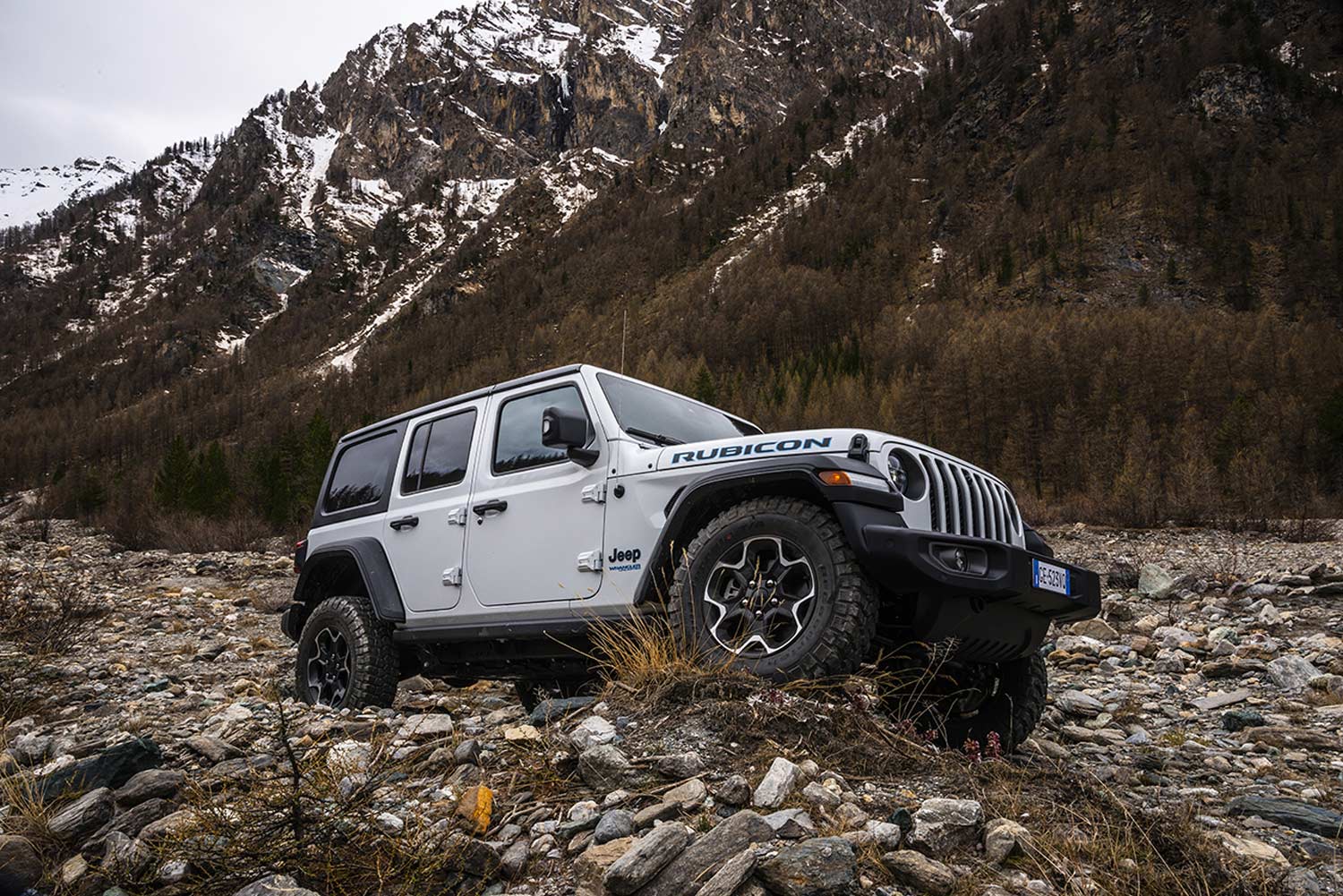 Jeep
Jeep
If you're looking at go-anywhere, rugged vehicles, you might have noticed something a bit confusing. The knob or lever that controls the four-wheel-drive system may have part- and full-time modes.
It's helpful to know when to use each mode. Let's explore, using a 2023 Jeep Wrangler with the brand's optional Selec-Trac transfer-case system as our guide.
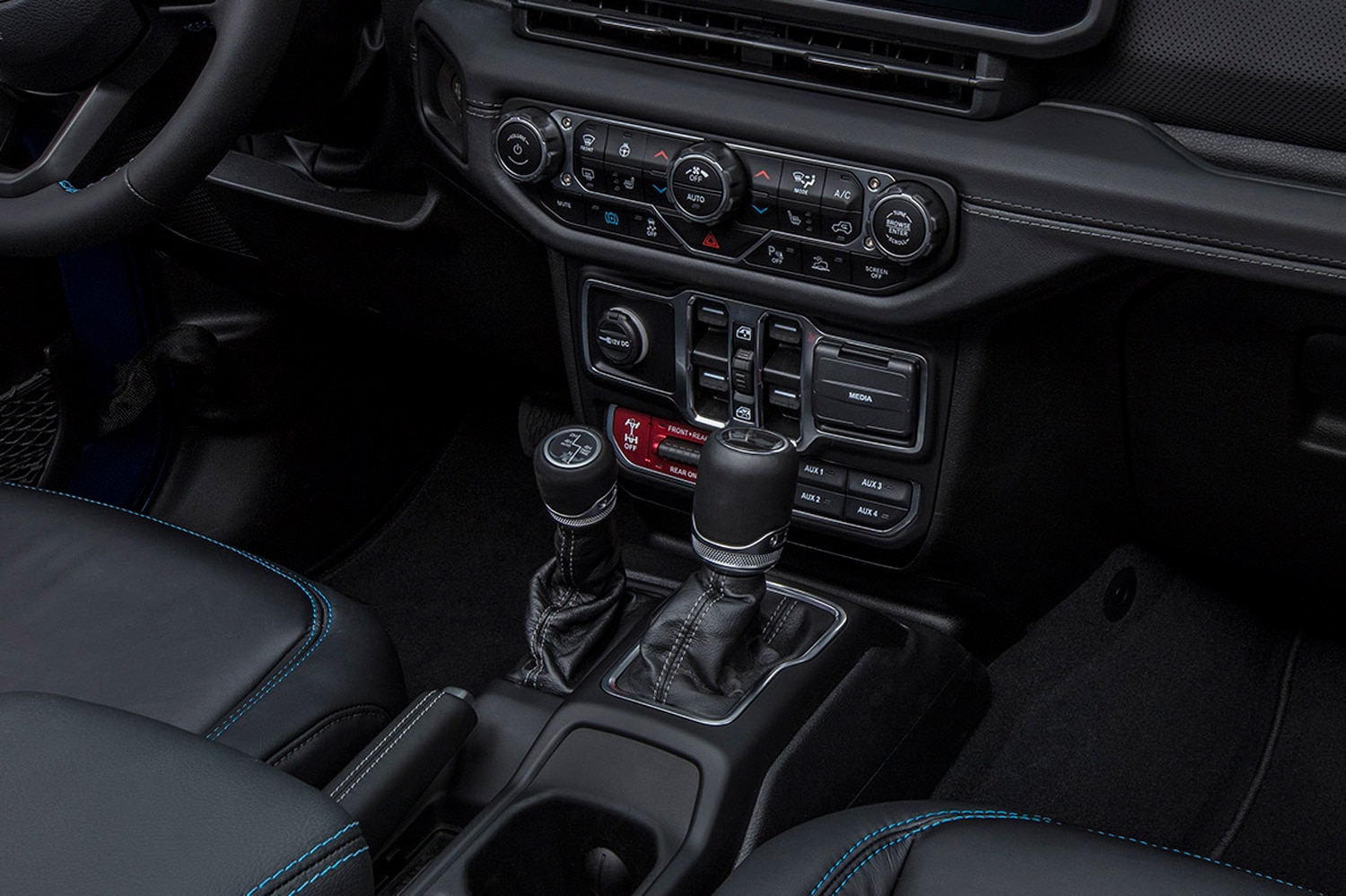 Jeep
Jeep
The Selec-Trac system features a transfer-case lever — located just to the left of the transmission lever — that offers the following modes:
- 2H for two-wheel-drive high
- 4H Auto for full-time automatic four-wheel-drive
- 4H Part Time
- N for neutral
- 4L for four-wheel-drive low range
In contrast, the Wrangler's standard Command-Trac system lacks the 4H Auto mode.
Other vehicles with both part- and full-time modes in some configurations include full-size pickups such as the
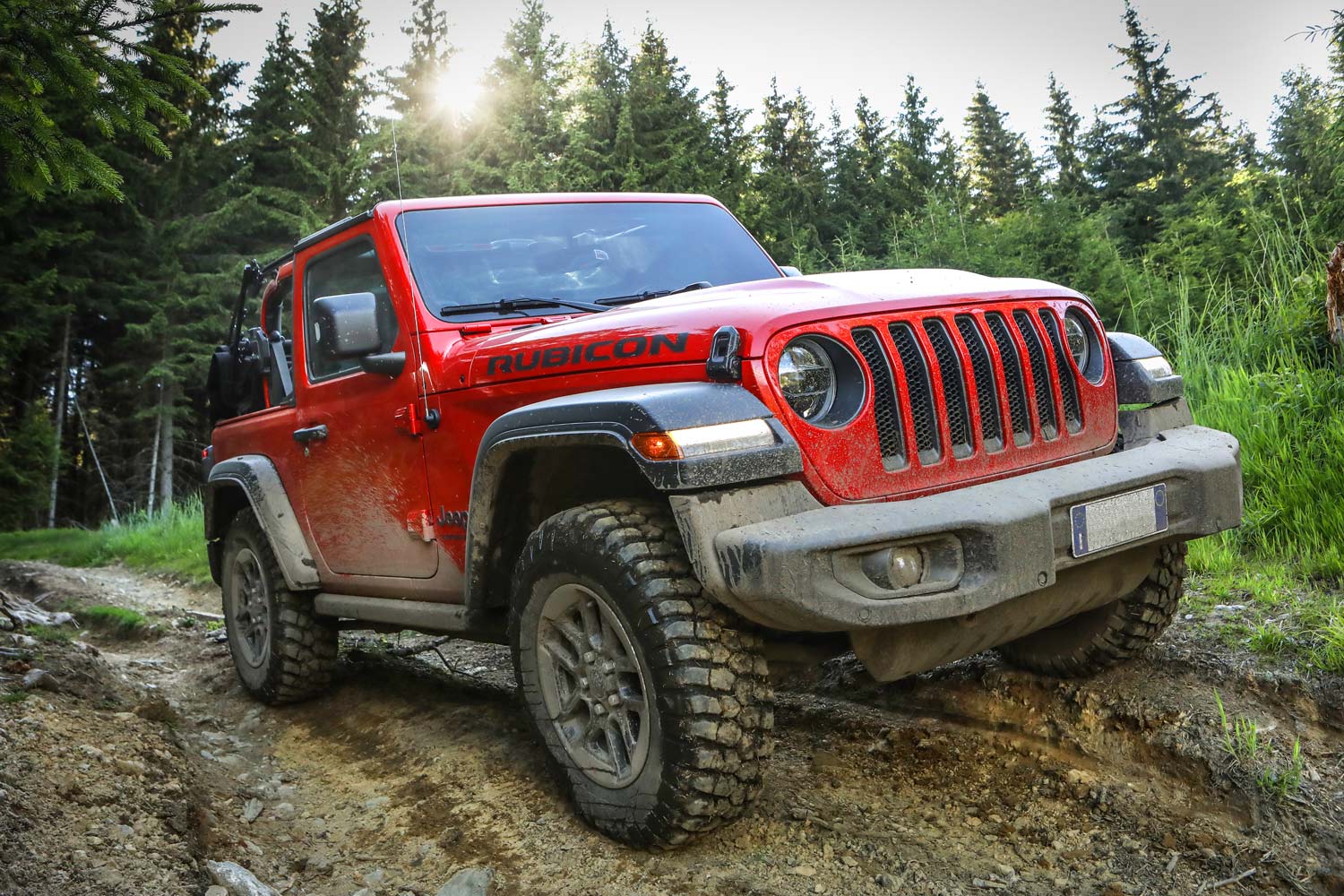 Jeep
Jeep
Understanding Automatic Four-Wheel Drive
In a vehicle with an automatic full-time four-wheel-drive mode, there is typically something called a viscous coupling. This transfers torque between two rotating parts in a viscous fluid (often silicone) that prevents binding in the center differential. The vehicle is always capable of putting power down to all four wheels when conditions dictate slippage, but it normally sends power rearward.
The viscous coupling helps quickly transfer power forward when slip is detected, though its response may require the better part of a wheel revolution. In short, automatic four-wheel drive responds with a hint of delay.
If you regularly drive in inclement weather or live on a dirt road, a vehicle with automatic full-time four-wheel-drive might be a good choice. However, those who commute on the highway in mostly sunny weather might want to leave the vehicle in two-wheel drive. In that mode, the system won't need to engage the front driveshaft, which means less wear on mechanical components.
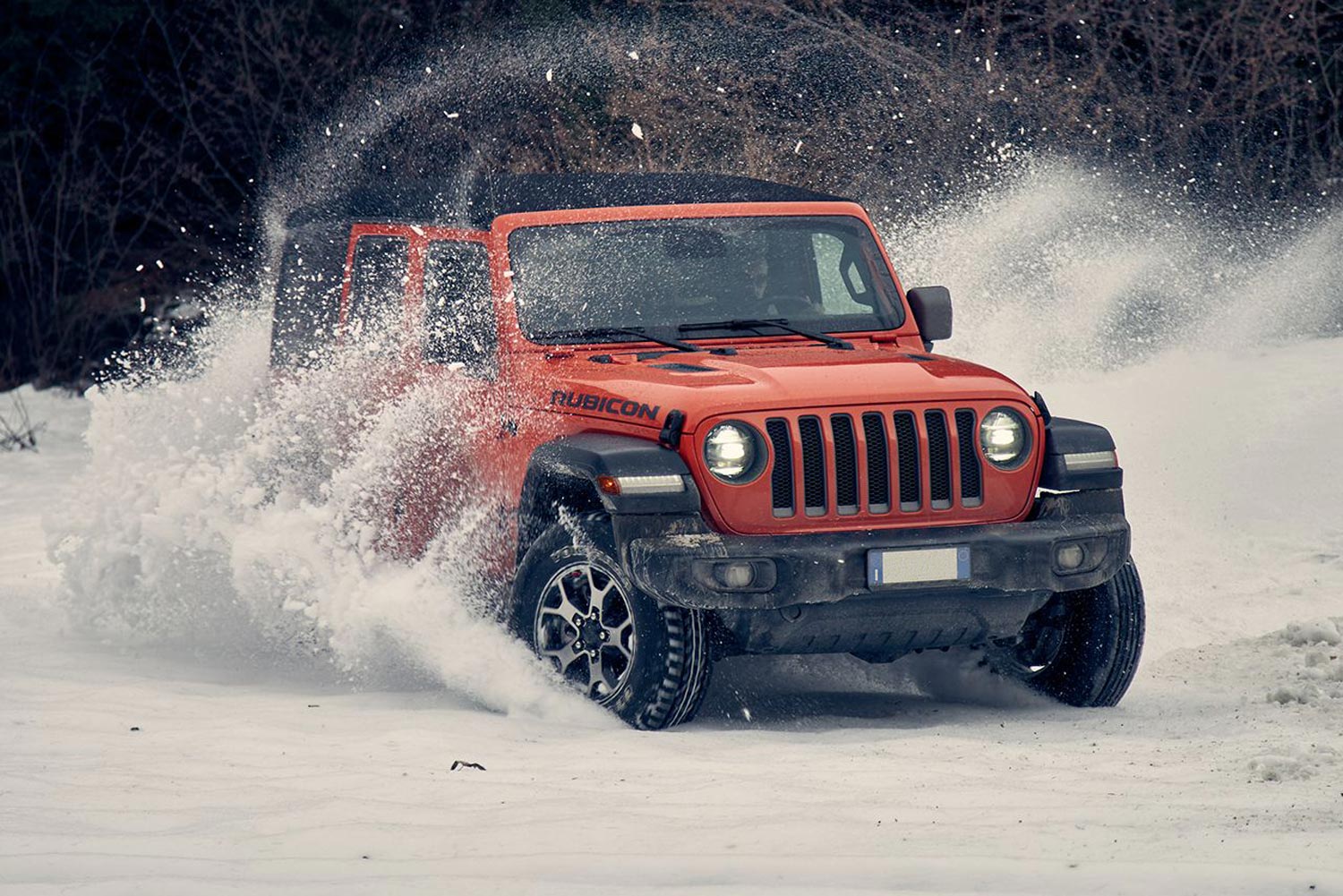 Jeep
Jeep
Part-Time Four-Wheel Drive Is for Off-Roading
Activating part-time four-wheel drive engages the front and rear driveshafts. In a low-slip situation, power will be sent equally forward and rearward. This is why you should not drive in four-wheel drive on the pavement. There is no way for the front and rear tires to rotate at different speeds when necessary, as in turning.
This is what people mean when they talk about driveshaft or drivetrain binding, which can be felt through the steering wheel like a bucking sensation when the vehicle is turned into a parking spot, for example. It can cause uneven tire wear and puts unnecessary strain on the drivetrain.
Part-time four-wheel drive is meant solely for off-road or deep-snow use, when traction is low and slippage is high. These systems can operate at higher speeds, but they are meant to be disengaged when the road is dry or speed increases.
The big advantage to full-time four-wheel drive is that there is no waiting for the system to engage the front axle. This means that the vehicle is already in a good position when it comes to traction.
The driver has more control in a vehicle that has part-time four-wheel drive. Keeping the rig in two-wheel drive for driving around town means improved fuel economy. When the going gets rough, that's when to engage four-wheel drive. This is usually done by turning a dial or using a shift lever. Usually the driver doesn't have to stop to go from two-wheel to four-wheel drive.
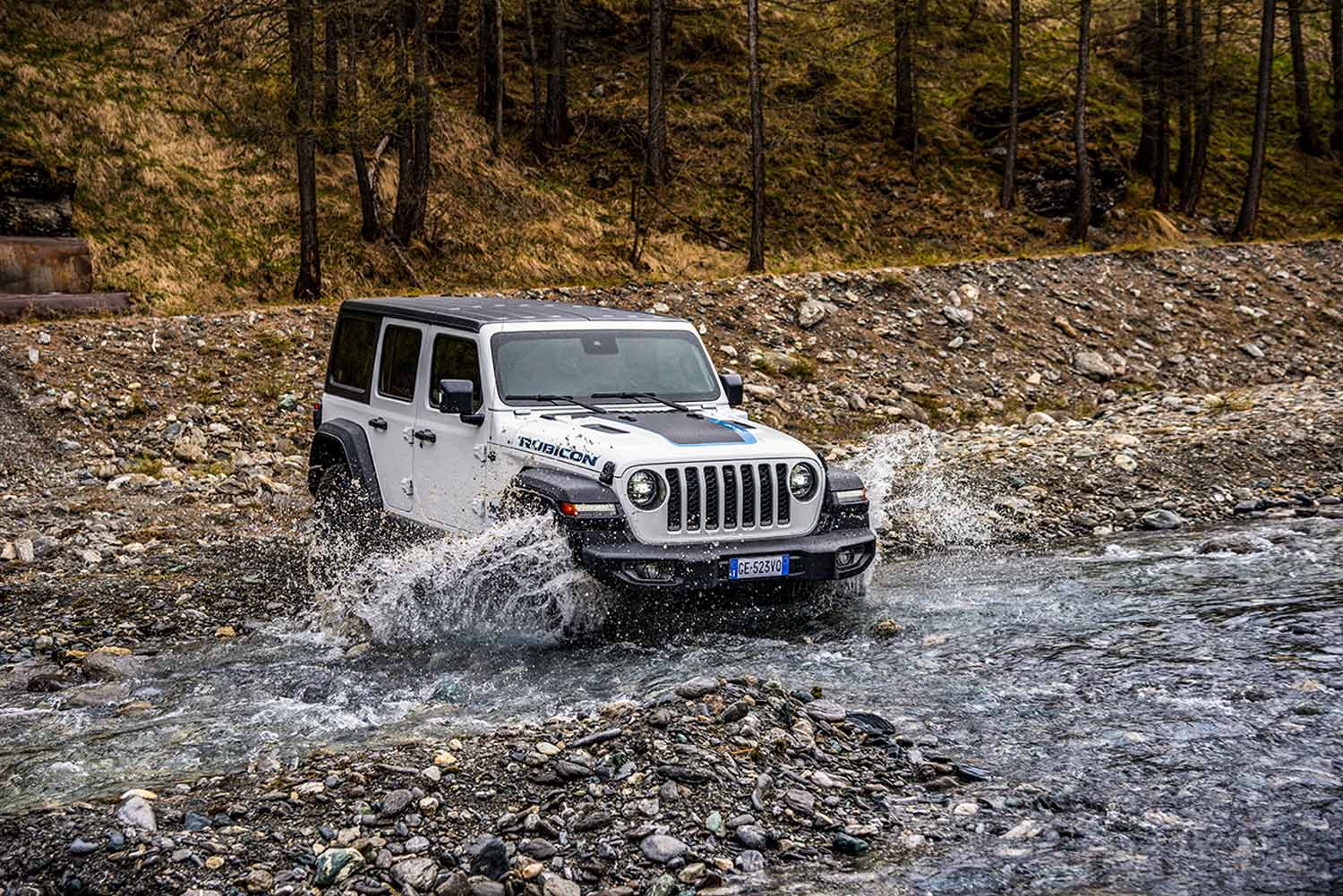 Jeep
Jeep
When to Use Automatic Four-Wheel-Drive Mode
Automatic four-wheel-drive modes are safe for use on any type of terrain, including dry pavement or dirt roads and in rain, mud, or snow. If the road ahead is dry, you might consider shifting back to rear-wheel-drive mode to reduce mechanical wear.
If you feel that you need maximum traction in deep snow or mud, or on a rocky off-road trail, go ahead and try out full-time four-wheel drive. Just don't forget to tug the transfer-case lever or turn the knob back to two-wheel drive or automatic mode when you're back on dry pavement.
Written by humans.
Edited by humans.
 Emme Hall
Emme HallEmme Hall loves small convertibles and gets out to the canyons in her 2004 Mazdaspeed Miata whenever she can. You can also find her in the dirt in her lifted (yes, that's right) 2001 Mazda Miata, or racing air-cooled Volkswagens in races like the Baja 1000. She's taken first place twice in the Rebelle Rally — once driving a Jeep Wrangler and then a Rolls-Royce Cullinan the second time. She was also the first driver to take an electric vehicle to the Rebelle Rally when campaigning the Rivian R1T to a top-five finish.
Related articles
View more related articles